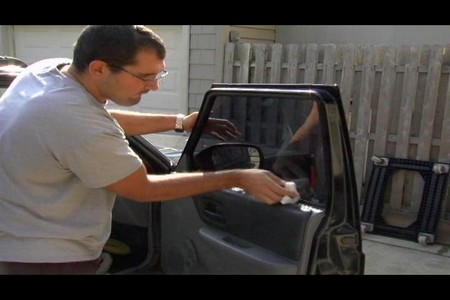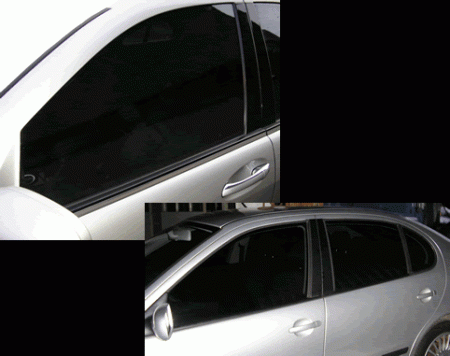Tinted car windows keep the interior cool and your passengers comfortable. Unfortunately, tints stop looking cool when the non-metallic dyes they contain break down and cause an unsightly color change. Sometimes, the adhesive used to attach the tint to a window will bubble as its adhesive quality begins to fail. Getting a workshop to remove the tint can be painfully expensive, so it pays to know how to remove window tint yourself.

Merely pulling at a corner of the peeling tint does not constitute how to remove window tint. Removing tint this way allows the adhesive layer to remain, creating a mess in the process. There are tint-removal methods that utilize ammonia. However, since the process takes place in the relatively enclosed space of your vehicle, it should be considered hazardous. Ammonia can also be corrosive in high concentrations, to say nothing of the toxic vapors that may accumulate in the interior of the car.
One safe way to remove tint is with a steamer. The key is heat, so even a heat gun or a hair dryer will work. The difference is that the heat gun and hair dryer will produce more heat than a steamer, so use them at a safe distance of about 2 inches away from the glass.
Heat or steam a corner of the tint until it can be picked off with a fingernail. Do not tear off this section; but continue heating or steaming small sections to peel off. The heat serves to loosen the adhesive, allowing the tint to be pulled cleanly away. The key to this operation is to work slowly. Rushing the job will result in only the tint being pulled off while the messy adhesive remains behind.
Once the entire tint has been removed, any remaining glue can be steamed and lifted off with a rag. To ensure the adhesive does indeed disengage, press the rag onto the adhesive to prevent smearing that can take place if the rag is wiped across the glass. The job is finished with window cleaner for a sparkling finish. A word of caution is advised when de-tinting the rear window. Heat should be applied from the exterior to avoid damaging the defroster wires.
A variant of the ammonia method involves a water-detergent mixture sprayed directly onto the tint, i.e. on the inside of the car. This is left to set for several hours in the heat of a sunny day, insulated by a layer of black plastic. Peeling takes place slowly and the detached piece is pulled off at right angles to the glass. Any residue can be cleaned off with glass or window cleaner. Oven cleaner can also be used this way. Insulation with black plastic is not needed and waiting times can be reduced as well.









